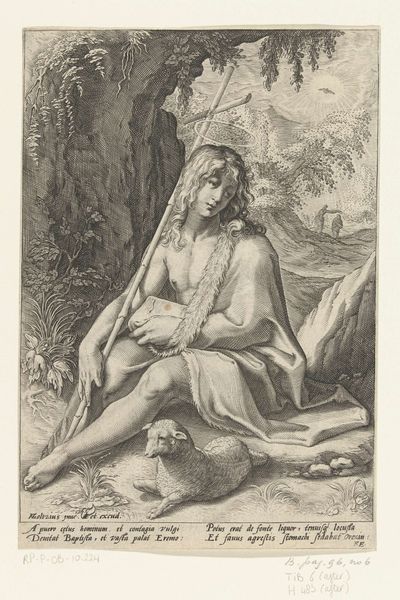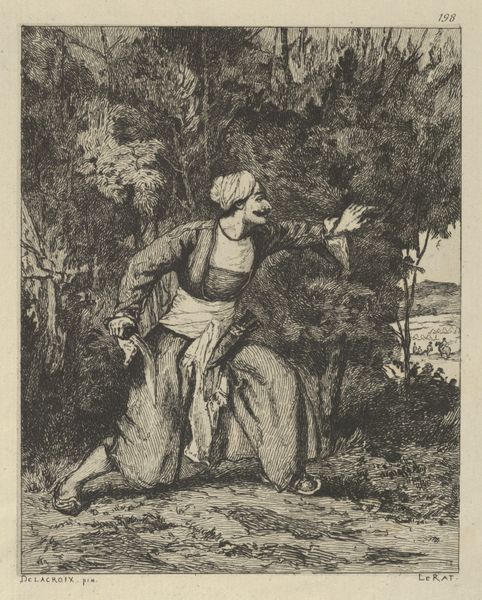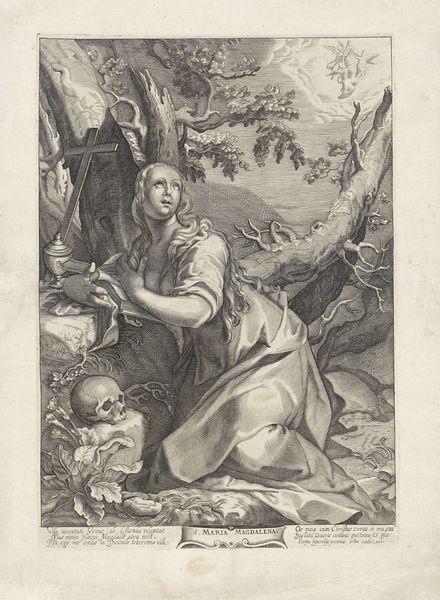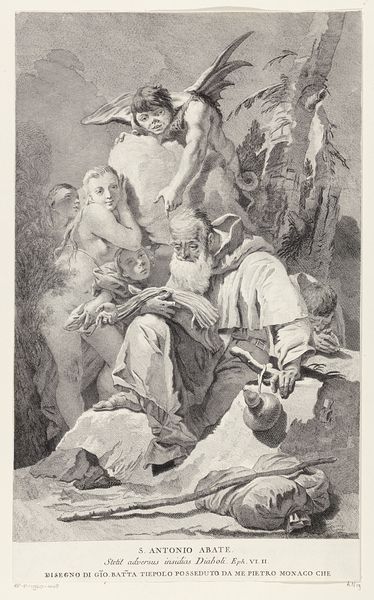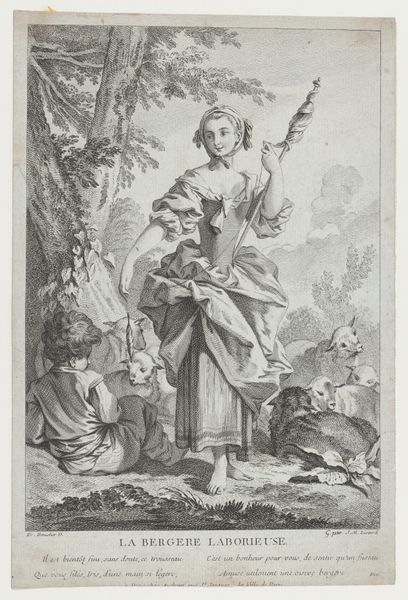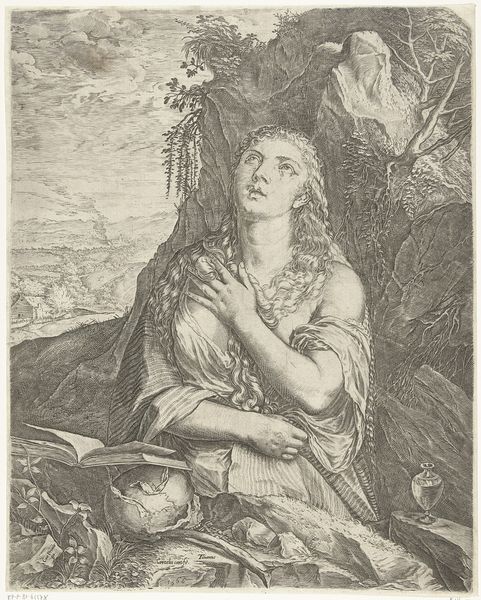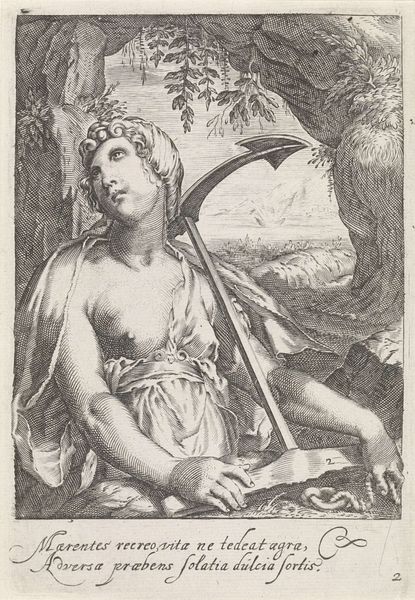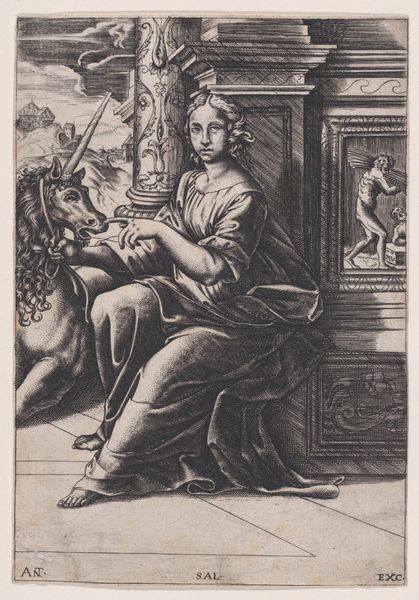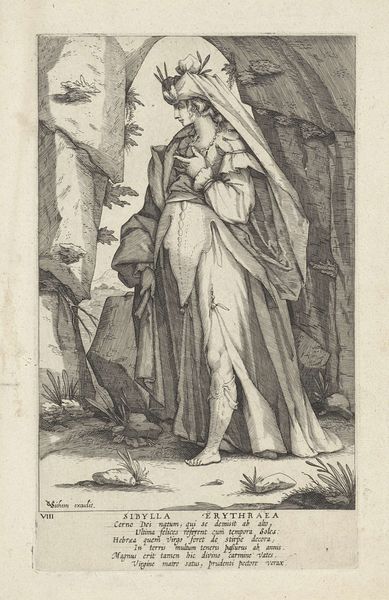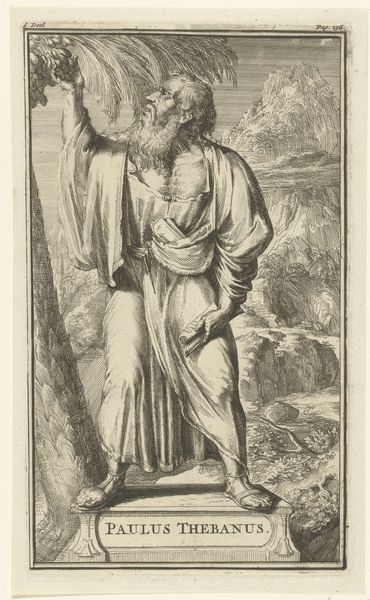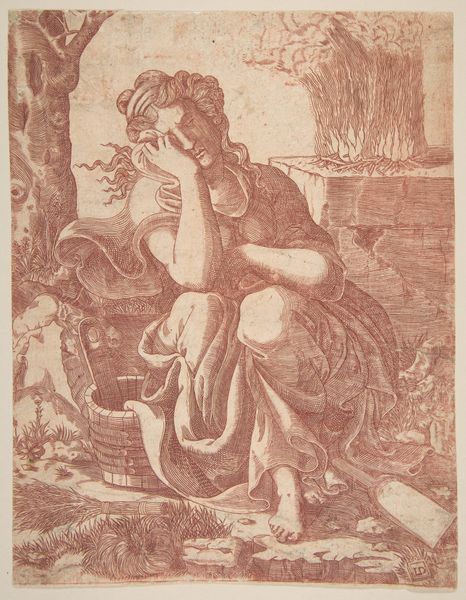
print, engraving
#
allegory
# print
#
landscape
#
figuration
#
northern-renaissance
#
engraving
Dimensions: 205 mm (height) x 144 mm (width) (Plademål)
This engraving, "John the Baptist in the Wilderness," was created by Conrad Goltzius sometime between 1587 and 1598. It reflects the religious and cultural milieu of the late 16th century, a time marked by both spiritual devotion and burgeoning artistic innovation. Goltzius presents John the Baptist as a figure of contemplation and spiritual defiance. Seated in a desolate landscape with a lamb, John embodies a life of simplicity and sacrifice, rejecting earthly comforts for divine purpose. His androgynous beauty, combined with the cross, introduce complexities of gender and identity, challenging conventional representations of religious figures. During the Renaissance, artists often used religious imagery to explore themes of humanism. Here, the emotional and personal dimensions of faith are emphasized. Goltzius invites viewers to reflect on their own beliefs and values. The stark contrast between light and shadow enhances the sense of drama and introspection, capturing the conflicting pulls between the material world and the spiritual one. This image prompts us to consider how cultural and religious narratives are constructed and internalized, while also resonating with our own emotional and personal connections to faith.
Comments
No comments
Be the first to comment and join the conversation on the ultimate creative platform.
